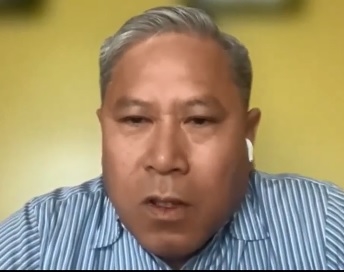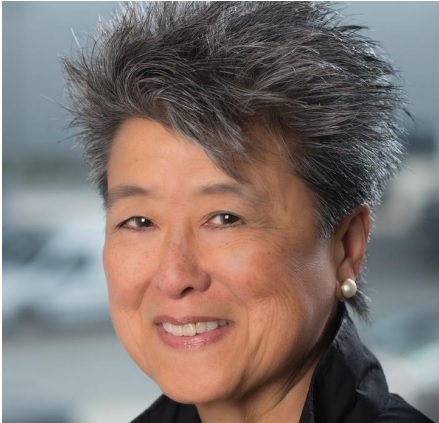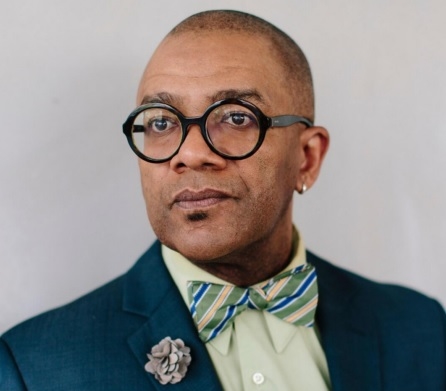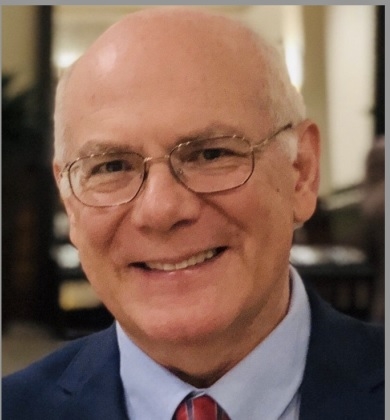Can Communities Heal from Hate?
Ethnic Media Services News
SAN FRANCISCO, California June 9 , 2023 / Indonesia Media— From violent hate crimes to structural racism and genocidal campaigns, how do we as a society find a way to reconcile with horrific acts perpetrated against individuals, their families, and their communities? The question takes on new urgency as the number of hate crimes and hate-related incidents continues to increase nationwide, targeting minority and historically marginalized communities.
EMS convened a panel of speakers to explore this topic. Speakers on the panel shared their personal experiences and discussed their work around documenting both past as well as current incidents of hate and intolerance.
From the brutal murder of Vincent Chin in 1982 to the political persecution of Argentinian dissidents and the movement to secure reparations for Black Americans, speakers discussed their personal and professional journeys toward healing. While coming from vastly different racial, ethnic, and geographic backgrounds, all agreed that a key step in the process is documenting hate in all its manifestations and validating the trauma of those impacted.
Below are some highlights from the conversation and a link to the Twitter thread: https://threadreaderapp.com/thread/1667228495314046976.html
Today’s briefing is being moderated by EMS Co-Director Julian Do, who leads our Stop the Hate campaign, a collaboration of ethnic media across California reporting on the impact of rising hate in local communities.
Stop the Hate | EMShttps://ethnicmediaservices.org/stop-the-hate/
“The question is, how do people and communities find a way to reconcile with horrific acts perpetrated against them, their family, their communities,” says Do. All our speakers agree on one point: the importance of documentation.
Our first speaker today is veteran activist @HelenZiaReal who will be discussing the rise in hate targeting the API community. “Even if these incidents happened long ago, they are absorbed in our psyches and our bodies.”
Back in 2019, when Covid was first ID’s the violence targeting Asians across continents began to be documented, says Zia. Even Asian Americans were surprised by uptick. “These are not new things at all… for many it was triggering.”
We are in a period of now 3 years and no end in sight, because as long as the rhetoric goes on about China and Chinese people being the existential threat against America, we know this kind of violence will continue, says Zia.
In 1982 this same hate was directed not at China but Japan, and led to the brutal attack against Vincent Chin in Detroit, who the perpetrators mistook for Japanese and blamed for the decline in American auto manufacturing.
This was a traumatic incident for all Asians, says Zia, who once worked in Detroit’s auto industry. The judge in the case let the attackers go with a slap on the wrist — no jail time.
Zia got to know Chin’s mother. “Her grief was intense,” she says. What made a difference was a community coming together to tell the world, this is something that happens to Asian Americans. And to begin to do something about it.
Zia turned to journalism, to document these attacks, to be an “agent of change.” Zia says the API community channeled their grief, joining with other #BIPOC communities to say, we stand against hate and inequality targeting any community.
A “new civil rights movement was born” out of this experience, Zia says, with ethnic media playing a critical role showing this was not a one off. “That was a healing process… the community got stronger.”
Zia founded the Vincent Chin Institute to show how communities came together because “we have to do it again.”
The Vincent Chin Institutehttps://www.vincentchin.org/
The Vincent Chin Legacy Guide is available in multiple languages. “We have to share these stories in as many communities as possible, because that is where the healing begins. And healing is empowerment,” says Zia.
The Vincent Chin Legacy Guide: Asian Americans Building the Movement — The Vincent Chin InstituteIn conjunction with the Vincent Chin 40th Remembrance & Rededication, a 64-page legacy guide has been published. This reference and teaching tool provides important historical context about why we rem…https://www.vincentchin.org/legacy-guide/english
Our next speaker is James Taylor, Professor of African American History at the University of San Francisco and a member of the SF Reparations Advisory Committee.
Taylor cites the Slavery Disclosure Ordinance, an annual report where every corporation in SF has to do a deep dive to determine any ties to slavery, and they can voluntarily add to funds. sf.gov/resource/2021/….
Reparations are about “repairing a people,” says Taylor, who notes the work his group has done has helped to spark a national movement. He adds reparations are the “natural outcome” of Black social justice efforts.
The Japanese community are the #1 supporters of reparations outside the Black community in San Francisco, says Taylor, along with the Jewish community.
They understand what it is to be a targeted community, Taylor notes. “When you talk about reparations, one of the most important cases is what happened to Japanese Americans.”
Reparations, not integration, has been the focus of the Black movement going back to the 1880s, Taylor says.
“We’ve inspired the world. There are 14 countries now talking about reparations,” and cities across the country. “People will push for this as a way of healing the broken bones in the Black community.”
Nestor Fantini is co-editor of Hispanic LA, a sociologist and former political prisoner in Argentina. “Telling victim’s stories is an important part of healing.”
Fantini was arrested for his political activities under the military junta of Argentina. He was tortured and in 1977 Amnesty International took up his case. As many as 30,000 people disappeared during this period.
On July 5, 1976, soldiers entered the prison cells, taking prisoners to the central courtyard. “We were completely naked, standing against the walls. The soldiers beat us with sticks, and at some point a fellow prisoner… fell to the ground.
An officer ordered him to get up, and when the prisoner couldn’t get up, another office approached and shot him.
“I strongly support reconciliation… and also restorative justice. Because they are the humane alternative to a dysfunctional criminal justice system, including here in the US.” However, there is no one-size fits all approach, he adds.
There are prerequisites for restorative justice: the offender needs to acknowledge the harm caused, and provide restitution. In Argentina, offenders refused. “There is no acknowledgement, there is no shame, there is no apology.”
Only the individual who suffered the harm has the authority to forgive… the state can judge, but only the individual can forgive, says Fantini.
Unfortunately, we’ve lost our connection to our fourth speaker, Beth Wright, Staff Attorney for @NDNrights, so we will be turning to our Q&A. The first question comes from Henrietta Burroughs of @epatoday.
Burroughs asks whether anyone ever tracked the killers in the Vincent Chin case and is it possible to retry the case. Zia notes there were calls for a federal civil rights trial… and there were financial penalties laid on the men.
The one who wielded the bat fled to Nevada. “We know where the killer lives,” says Zia. We have been keeping track of this man, and there may be no restitution in terms of acknowledgement or material recompense.
But the follow through from the community is that the killer will never have a day go by without being reminded of the debt he owes to the family and to society.
It is so imp to move away from the idea of revenge… not from the memory of the experience, says Fantini in response to a q. from reporter Nora Estrada. It is very important to be able to overcome the hate… to talk about what happens, and that we document as much as possible.
Reparations are not about what white ppl did to Black ppl. It is about state harm, says Prof, Taylor, what the state did. Anyone who emphasizes the money misses the point. We have 110 recommendations.
Reparations are about the fixing of the Black community. I think it is the last frontier of America. Reparations would heal this land in a tremendous way.
They say time heals all wounds. But time is not enough. There must be action, there must be learning. We must know the past… and try to change the past so we don’t repeat it in the future, says Zia.



















